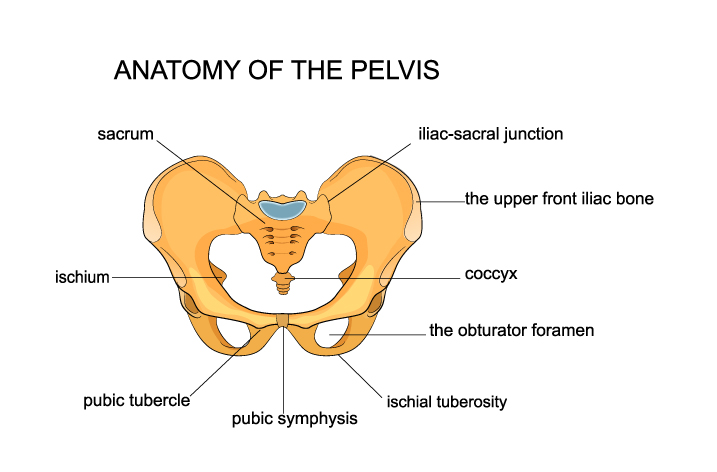There are many reasons why a person can experience low back pain as there are many structures in the back such as the intervertebral disc, muscles and tendons, ligaments, facet joints to name a few. There is also something known as the sacroiliac joint (SIJ) which too can cause pain along with the other aspects.
What does the Sacroiliac joint do?
It’s main role is a big one. It’s the area of transition between the spine and the pelvis. It has a “V” shape which enables it to fit like a wedge causing it to be quite inflexible, but extremely rigid. As the pelvis takes the majority of the body weight with the head and torso, (around two thirds), the sacroiliac sits at an oblique angle with an opening at the front and converges at the rear enabling it to support the weight above it.
It is obviously a key component of the body’s structure and thus prone to many of the same issues that afflict other areas of the spine.
Despite its importance, identifying pain caused by it is not so simple. It often takes several examinations, X-Ray, MRI or even CT scans to arrive at a proper diagnosis. The limitation of X-Rays in this instance is due to the fact the sacroiliac joint is neither smooth, nor flat making it difficult to determine an issue. However, the pubic bone (also known as the symphysis pubis) which is in front of the pelvis can be seen quite clearly on X-Ray and if this is shown to be out of alignment, it could mean that the sacroiliac joint is dysfunctional.
A study by two orthopedic surgeons looked at 20 cases of patients with proven sacroiliac joint dysfunction. In those 20 cases, they discovered that in 18 cases, they had findings of osteoarthritic degeneration and subluxation (or misalignment).
They then assessed the symphysis pubis in 20 patients without sacroiliac joint dysfunction. Here they discovered that 7 had abnormal symphysis pubis results, compared with 18 out of 20 with the sacroiliac joint dysfunction low back pain in the first group. Upon looking at previous radiology results, they discovered that only three reports showed the sacroiliac joint dysfunction in the first group. The observation was made that the symphysis pubis findings were under reported by radiologists, meaning that the sacroiliac joint dysfunction was being missed. If it is missed, then obviously the following treatment does not get applied to the problem area and the patient doesn’t respond.
At Warwick Chiropractic in Lacey, we are very aware of issues such as this and are able to consider aspects that have been missed elsewhere. If you are suffering low back pain and have not had any luck in reducing it, perhaps your doctors have missed this. Come in and see us today and see if we can help you. Call now 360 951 4504.
And if you want more information on types of low back pain and how to manage it, sign up below to receive a FREE ebook on Back and Neck Pain. There’s lots of useful help in it.



